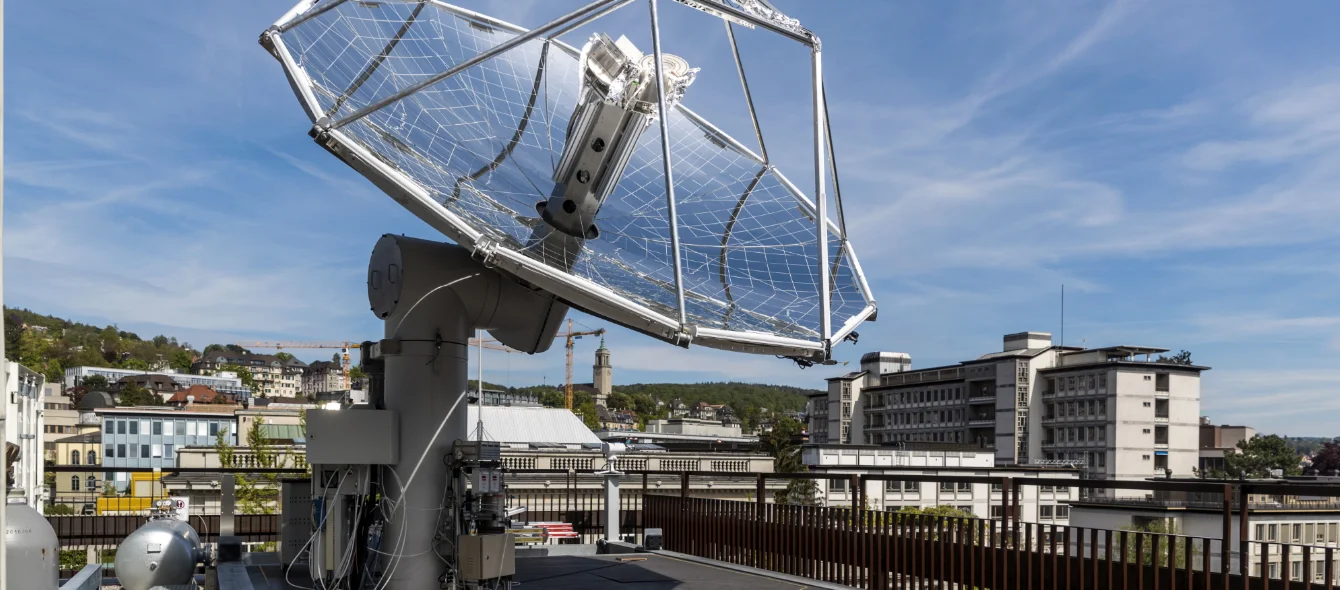As far as humankind can fathom, the power of the sun is infinite. Its rays supply as much energy to the earth in 90 minutes as the human race consumes in an entire year. So far, we have used it to produce PV power above all else. But in many applications, it is more efficient to harness heat radiation. Our Solar Heat series has turned onto the home straight. As we approach the finish line, we will take a look at how the energy of the sun can be used to produce gaseous and liquid fuel without having to take the intermediate step of generating electricity.
So the warmth of the sun can be used to produce fuel? Yes, thanks to thermochemical processes that reduce water and carbon dioxide to hydrogen and carbon monoxide. This involves employing CSP (concentrated solar power) technology to deflect sunlight via a field of reflectors (heliostats) to a reactor in a tower, where the sunlight triggers the desired redox reaction. This principle is best known from solar thermal power stations where sunlight is harnessed to heat a liquid heat transfer medium that drives a steam power plant.
Hydrogen from the sun’s heat
The technology used to produce fuel is being explored by the Institute for Solar Research at the German Aerospace Centre (DLR). Spearheaded by Thomas Fend, the group of researchers is focussing on hydrogen production.
“In theory, our technique has an energy efficiency of 30 to 50 percent,” says project director Fend. This would be quite sensational. By comparison, a PV-powered electrolyser converts a mere 15 percent of the energy captured from the sun to hydrogen. In real life, however, hydrogen production from solar heat currently has a yield of just about 4 percent. This is primarily due to the high temperatures around 1,500 degrees Centigrade which are required to initiate the process, Fend explains. He goes on to say that the building materials have to meet exceptionally high standards, which is why the DLR scientists are searching for a reactor material capable of enabling the necessary redox processes at low temperatures.
Aviation fuel from a solar farm
A team of scientists at ETH Zurich, a university of science and technology, is grappling with similar problems. Nevertheless, they have gone a step further. Since June 2019, a small experimental reactor mounted on the institute’s roof has been producing both hydrogen and carbon monoxide, which are then synthesised to kerosene and methane. Concurrently, the researchers are operating a larger test unit in the vicinity of Spain’s capital City of Madrid as part of the EU-subsidised SUN-to-LIQUID research project, in which the DLR is also involved.
Sun-to-Liquid - Renewable Transportation Fuels from Solar Energy
Both of the systems work, and based on the scientists’ calculations, this technology could yield 20,000 litres of kerosene from a system covering one square kilometre. However, it would take nearly eleven days to fill up a jumbo jet. Nevertheless, SUN-to-LIQUID Coordinator Andreas Sizmann of the Munich research institute Bauhaus Luftfahrt is convinced that the technology provides a real chance to achieve significant reductions in aviation emissions. “Its potential is enormous, because there are no technical limits to scaling it and the plants don’t compete with agricultural land,” he says, adding that it needs so little water that such systems could be set up in desert regions.
“What we’re missing,” Sizmann feels, “are ten years of development,” after which the costs of the two key technologies – solar reactors and carbon capture – might be reduced to competitive levels.
Carbon-neutral cement
Meanwhile, Synhelion, the company that markets the technology of ETH Zurich, has entirely different plans: Together with Mexican cement giant CEMEX, the company intends to build the world’s first carbon-neutral cement factory. To this end, Synhelion wants to capture the carbon emissions resulting from the chemical processes of cement production in particular and refine them to aviation petrol or another fuel. Another goal is to obtain the process heat required for cement production by a solar heat process so that the factory will no longer need any fuel at all once converted. A pilot unit is scheduled to be commissioned in an existing CEMEX plant in 2022.
